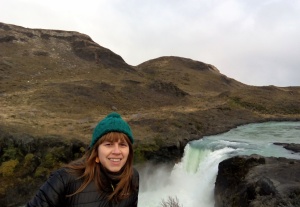Varela, Z., López-Sánchez, G., Yáñez, M., Pérez, C., Fernández, J.A., Matos, P., Branquinho, C. & Aboa, J.R. (2018) Changes in epiphytic lichen diversity are associated with air particulate matter levels: The case study of urban areas in Chile.
Ecological Indicators,
91, 307-314. DOI:10.1016/j.ecolind.2018.04.023 (IF2018 4,490; Q1 Environmental Sciences)
Chileans living in urban areas are exposed to several air pollutants, namely to a mean annual concentration of atmospheric PM2.5 (>40 µg m−3 year−1) that exceeds two times the level established by legislation in both Chile and the European Union and four times higher than the recommended by the World Health Organization for good air quality. The evaluation of air pollution, namely particulate pollution, in urban areas is performed by air quality monitoring stations. These, are not sufficiently distributed in space to cover all areas with high spatial resolution, needed for a good assessment of the exact human exposure. In this context, lichen diversity studies could fill the gap of increasing air quality spatial resolution in areas not covered by monitoring stations. We aim at using taxonomic (species richness and abundance) and trait-based epiphytic lichen diversity (growth form) to evaluate the impact of air pollution levels in Chilean urban environments. For that, lichen diversity was evaluated in three background areas, seven centres of various Chilean cities and their peri-urban zones. Though trait-based metrics responded negatively to air pollution, lichen abundance was the best metrics (index of lichen diversity), being negatively associated (r = −0.89; p < 0.001) with the number of days per year that particles exceeded the mean annual level established by legislation (>20 µg m−3 year−1). This suggested that the main source of changes in lichen diversity in urban areas of Chile is particulate material or other associated pollutants. These findings show that in high levels of pollution, total lichen diversity can be used to track particulate material pollution above the recommended levels, providing data for areas without monitoring stations. This information can then be used to select new areas for monitoring stations, or to evaluate the potential health effects of the population living in these areas.


